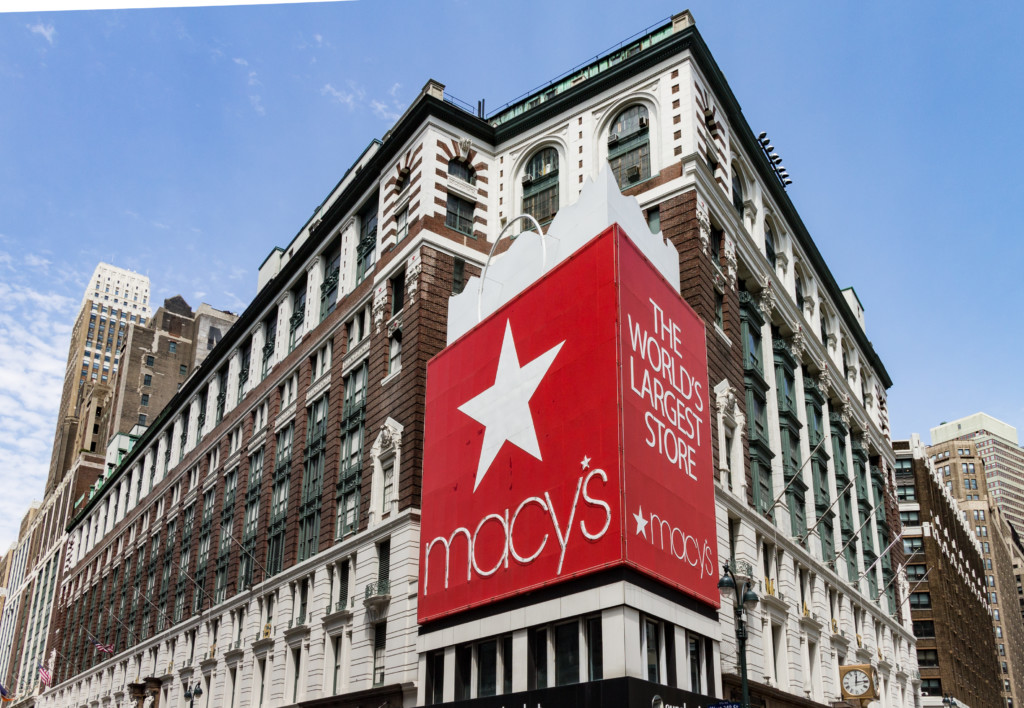The importance of logistics and supply chain optimization
Macy’s is one of the largest American department store chains. Founded in 1858, Macy’s offers a wide range of products, including apparel, accessories, housewares, cosmetics and more. It operates both physical stores and an online sales platform. Macy’s is renowned for its iconic department stores, such as the one in New York’s Herald Square.
For this company, inventory optimization has become a competitive advantage in a difficult retail environment, according to analysts and company executives. Macy’s CFO Adrian Mitchell highlighted inventory optimization as a “lever for value creation” in November 2023. “We have made significant progress in leveraging data to better forecast demand, scheduling of inbound shipments and product flow through the supply chain,” he said. “The company’s inventory levels decreased by 3% last year and are down 18% compared to 2019. Although inventory rotation was down 4% last year, it has improved by 15% since 2019,” Mitchell added.
This example, among thousands, demonstrates that Supply Chain and Logistics play a crucial role in the modern business panorama, and are essential pillars of efficient operational management.
In a context where competitiveness is inevitable, supply chain and logistics optimization must be part of every company’s strategy.

Supply chain and logistics fundamentals
The supply chain is the complex network of different stages involved in the creation and delivery of a product, from conception to final consumption. It encompasses a set of interconnected processes, from the planning and procurement of raw materials to production, inventory management, distribution and final delivery. In short, it represents the global network that transforms raw materials into finished products and delivers them to the consumer.
Logistics, on the other hand, focuses on the physical management of these flows within the supply chain. This includes transportation, warehousing, goods management and all the operations required to ensure the smooth flow of products. Logistics, by its operational nature, seeks to optimize the storage, transportation and distribution of goods in an efficient and cost-effective manner.
Understanding these two concepts is essential, as they form the foundation on which a company’s operational management rests.
Supply Chain is a more global concept, encompassing all processes, while Logistics focuses on the concrete, physical aspects of managing these flows.
Today’s supply chain and logistics challenges
Today’s supply chain and logistics challenges are particularly accentuated by the forces of globalization, the growing complexity of distribution networks and unpredictable fluctuations in market demand. These challenges highlight the urgent need for companies to adopt optimal management strategies. Indeed, failure to optimize the supply chain can quickly lead to excessive costs, resulting from inefficient process coordination and bottlenecks.
The complexity of distribution networks also adds uncertainty and volatility, making flexible, adaptive solutions essential. The ability to anticipate and respond rapidly to variations in demand is becoming a competitive factor. In this context, failure to optimize can lead to delays, stock-outs, and an inability to align effectively with market expectations, resulting in customer dissatisfaction.
Optimization becomes a strategic imperative not only to minimize costs, but also to guarantee optimum customer satisfaction by ensuring constant product availability while avoiding unnecessary excess.
The objectives of optimization
The objectives of supply chain and logistics optimization are many and crucial to ensuring efficient and competitive operations. First and foremost, optimization aims to reduce costs, by minimizing production, distribution and storage expenses. This cost reduction contributes directly to improving the company’s overall profitability.
At the same time, optimization aims to increase operational efficiency. This translates into more efficient use of resources, more precise management of goods flows, and better synchronization of processes. An optimized supply chain is able to react rapidly to changes in demand, reduce production and distribution lead times, and optimize inventory levels.
Another key objective of optimization is to ensure customer satisfaction. By anticipating market needs and guaranteeing constant product availability, optimization contributes to a better customer experience. Shorter delivery times, efficient returns management and high service levels all help to strengthen the relationship between the company and its customers.
Technologies and innovations for optimization
Supply chain and logistics optimization today is influenced by the integration of emerging technologies, marking a veritable revolution.
Among these technologies, the Internet of Things (IoT) stands out for enabling intelligent connectivity between the various links in the supply chain. Thanks to intelligent sensors integrated into products and equipment, companies can track the location of goods in real time, monitor storage conditions, and anticipate maintenance requirements.
Artificial intelligence (AI) also plays a prominent role, offering advanced, predictive analysis capabilities. AI algorithms can analyze large volumes of data to identify trends, forecast demand, optimize delivery routes, and even automate complex processes. AI thus contributes to more informed decision-making and proactive management of logistics challenges.
Blockchain, meanwhile, is revolutionizing transparency and traceability in the supply chain. By creating decentralized, immutable registers, blockchain enables products to be tracked from manufacture to delivery, ensuring data integrity and trust between stakeholders.
Inventory management and distribution strategies
As a result of operational shutdowns during COVID, billions of dollars’ worth of goods were tied up, causing major losses for manufacturers.
Optimizing inventory management is of crucial importance. This encompasses a number of objectives, including minimizing storage costs, optimizing stock rotation to avoid obsolescence, and reducing the risks associated with poorly managed stock levels. Optimal management also involves optimizing ordering processes or replenishment models. By balancing these aspects, companies aim to increase profitability, remain competitive and adapt effectively to fluctuations in a dynamic and competitive market.
Reviewing the logistics distribution network is also crucial to optimizing supply chain flows. As part of this review, distribution processes are examined, focusing on locating bottlenecks, potential delays, excessive costs, and other obstacles that could interfere with the smooth flow of products.
This is often an analysis that includes warehouses, distribution centers, means of transport, and associated information systems. Reviewing the distribution network provides greater visibility over the supply chain, enabling companies to make more informed and responsive decisions.
By carefully analyzing these aspects, the aim is to optimize costs and lead times, improve operational flexibility and explore innovative solutions, such as combined transport, to maximize the overall efficiency of the logistics network.
Sustainability and optimization
Integrating sustainability into optimization strategies is a wise strategic choice, bringing considerable benefits in the medium and long term. First of all, adopting eco-responsible practices goes beyond simply meeting ethical requirements; it is also a response to the growing expectations of consumers and stakeholders in terms of environmental responsibility.
In economic terms, sustainability can lead to a significant reduction in costs. Optimizing processes to minimize carbon footprints, reduce energy consumption and minimize waste can translate into direct savings. For example, the transition to more sustainable transportation practices, such as the use of low-emission means of transport, can not only reduce operational costs, but also strengthen the resilience of the supply chain in the face of increasing environmental pressures.
Moreover, integrating sustainability into optimization strategies offers a unique opportunity for market differentiation. Consumers are increasingly sensitive to environmental issues, and a company that demonstrates its commitment to sustainability can benefit from a positive brand image. This can translate into increased customer loyalty, attracting consumers who prefer responsible companies.
Performance measurement and KKPIs
Performance measurement and the use of key performance indicators (KPIs) play a crucial role in the success of supply chain optimization initiatives. KPIs are essential tools for quantifying and evaluating progress towards set objectives. Their precise, relevant definition provides a clear view of operational performance, facilitating informed decision-making.
The first step is to identify the key aspects of the supply chain that are crucial to the company’s overall success. These may include indicators such as inventory turnover, customer satisfaction, delivery times, logistics costs, and many others. Each company can adapt these KPIs to suit its specific objectives, but it is essential that they are aligned with the overall strategy.
Once the KPIs have been defined, it becomes imperative to put in place effective monitoring mechanisms. This may involve the use of integrated supply chain management systems, data analysis software, and other technological tools. These mechanisms enable accurate, real-time data collection, providing constant visibility on performance.

Conclusion
In conclusion, optimizing the supply chain and logistics is an essential strategy in today’s business environment. The fundamentals of supply chain and logistics, with their distinction between global processes and the physical management of flows, form the essential basis for efficient operational management of the company.
Today’s challenges, accentuated by globalization, complex distribution networks and fluctuating demand, underline the urgency of adopting optimal management strategies. Optimization is becoming a strategic imperative to minimize costs, anticipate demand and guarantee optimum customer satisfaction.
Optimization objectives, focused on cost reduction, improved operational efficiency and customer satisfaction, guide this strategic approach.
Efficient inventory management, along with regular reviews of the distribution network, are crucial examples of how to avoid excessive costs, delays and stock-outs. What’s more, by integrating sustainable practices, optimization goes beyond ethics to deliver economic benefits, market differentiation, and help build a more sustainable future.
Finally, measuring performance through KPIs, combined with effective monitoring mechanisms, creates a cycle of continuous improvement within the Supply Chain. This enables agile adaptation to changing market requirements, strengthening the company’s competitiveness. Optimization is not simply a quest for cost reduction, but a global strategy aimed at creating a more profitable, efficient, customer-oriented supply chain, anchored in a sustainable perspective.




